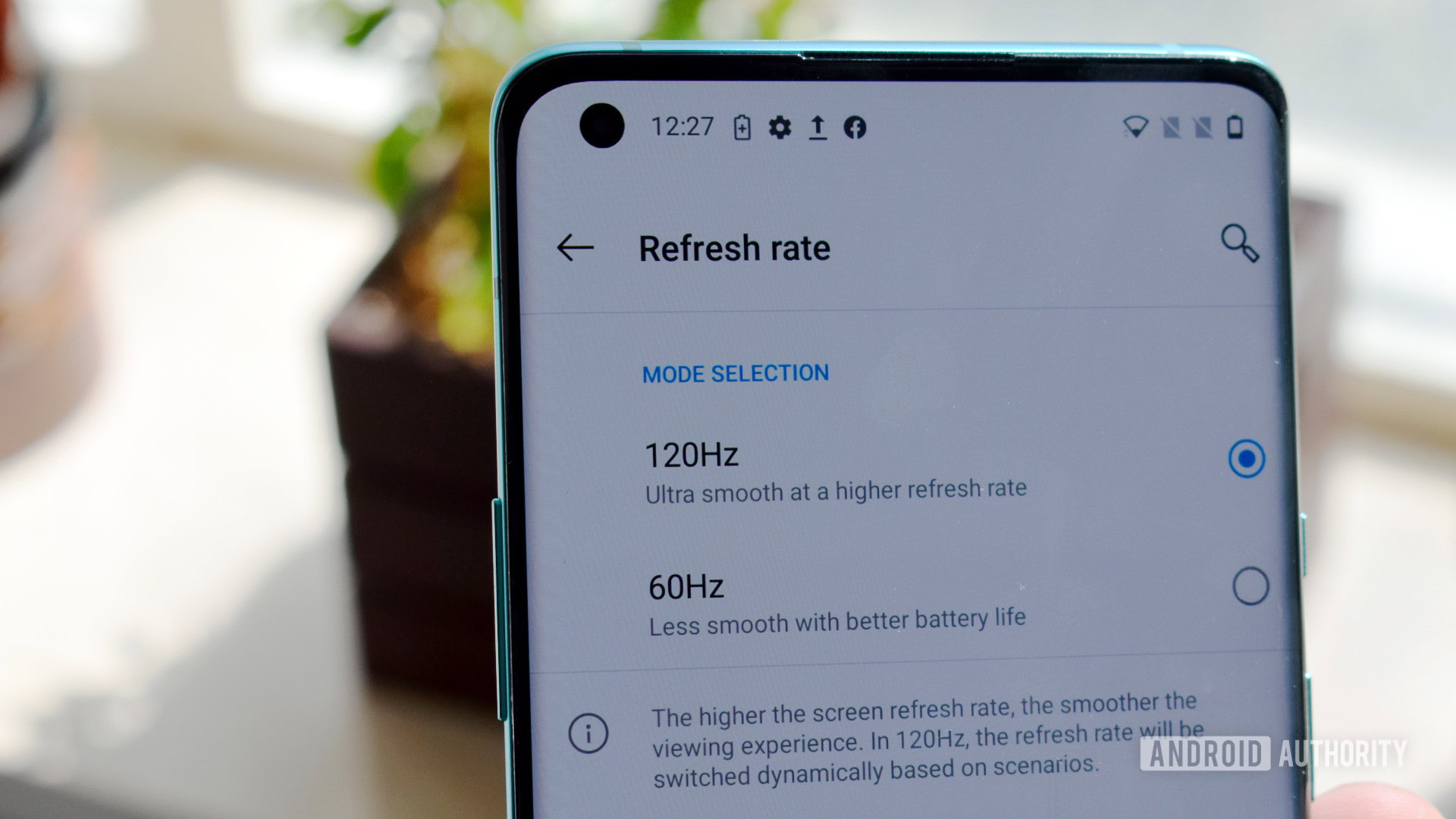Affiliate links on Android Authority may earn us a commission. Learn more.
Strangely, the OnePlus 9 might offer a subjectively better display than 9 Pro

- According to a new leak from Max Jambor, the OnePlus 9 Pro display could be an LTPO OLED with an adaptive 120Hz refresh rate.
- Meanwhile, the vanilla OnePlus 9 could have a straight OLED panel with always-on 120Hz.
- While the 9 Pro’s setup might result in better battery life, most users would likely agree that an always-on high refresh rate is the ideal scenario.
Today, smartphone leaker Max Jambor took to Twitter to share another one of his enigmatic leaks. According to Jambor, the upcoming OnePlus 9 Pro could feature a low-temperature polycrystalline oxide (LTPO) display. This would mean the 9 Pro could have a very similar display to the one we saw on this year’s Galaxy S21 Ultra.
However, that would also mean that the OnePlus 9 Pro display would likely feature an adaptive refresh rate, just like the Galaxy S21 series. An adaptive refresh rate uses software to automatically change the refresh rate from as high as 120Hz to as low as 10Hz, depending on the situation. For example, the phone would drop the refresh rate while you’re reading an e-book. It would then raise it to the limit while you’re playing a game that supports 120Hz.
According to Phone Arena, Jambor privately confirmed that the vanilla OnePlus 9 would not have this feature. If that’s true, that means the OnePlus 9 Pro display would have an adaptive refresh rate while the OnePlus 9 would just be at 120Hz most of the time, just like last year’s OnePlus 8 Pro. Ironically, a large portion of OnePlus’ user base would likely prefer an always-on 120Hz to the adaptive refresh rate idea.
OnePlus 9 Pro display: Worth the battery life trade-off?
The benefit of an adaptive refresh rate as compared to a static one is battery life. In that e-book example mentioned earlier, there’s no reason your screen should refresh 120 times each second while you’re just reading text on a static page. That’s a situation in which an adaptive refresh rate would be beneficial.
However, there will assuredly be situations in which the adaptive refresh rate of the OnePlus 9 Pro display would overcompensate. In other words, there will very likely be times that you’ll want a 120Hz refresh rate but the software won’t allow it. In that sense, the OnePlus 9’s always-on refresh rate would be ideal.
Do you prefer an adaptive or static refresh rate?
Ultimately, which situation you like better will come down to your own personal taste. In the poll above, you can let us know which situation you think is best. Perhaps we are wrong and OnePlus fans would rather have adaptive refresh rates.
However, we can’t ignore the possibility that OnePlus could offer the best of both worlds with the OnePlus 9 Pro display. It’s possible there could be an option for an always-on refresh rate in addition to the adaptive one. We’ll need to wait and see. Thankfully, we expect the OnePlus 9 series to launch much sooner than usual this year, so we likely don’t have long to wait.